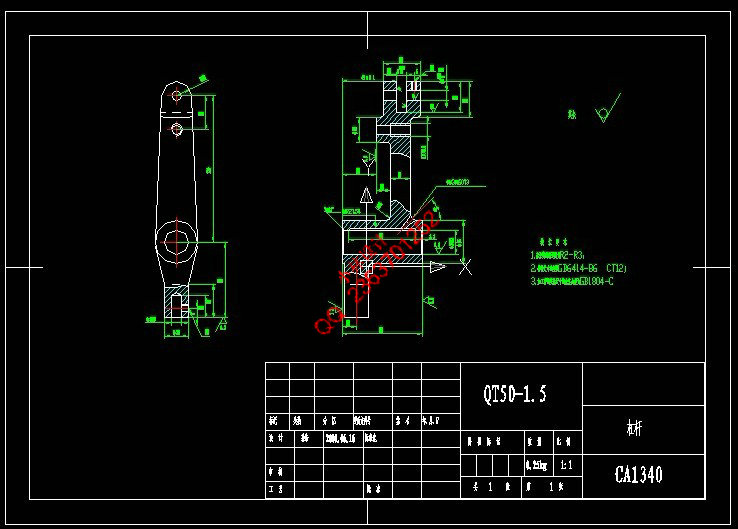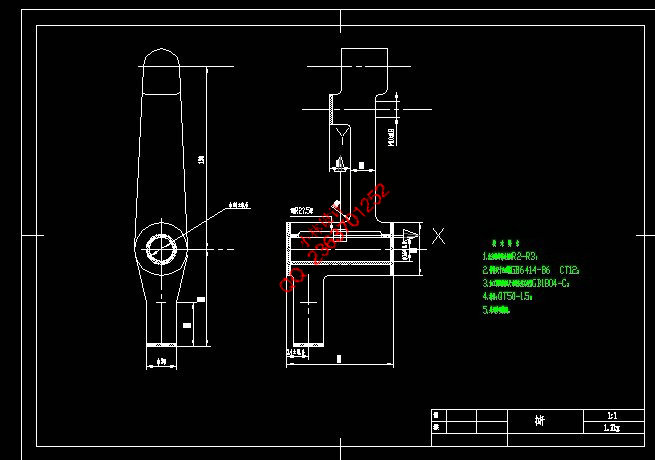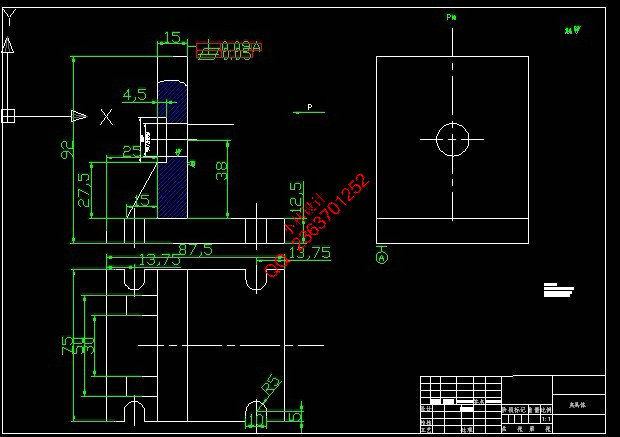|
文档包括:
word说明书一份,共20页,约9800字
工艺卡一套
该课程一套
CAD版本图纸,共4张
一、设计题目 CA1340杠杆零件的加工工艺规程及铣槽8的专用夹具设计
二、设计要求
(1) 被加工零件的零件图 1张
(2) 生产类型:大批大量生产
三、上交材料
(1) 被加工工件的零件图 1张
(2) 毛坯图 1张
(3) 机械加工工艺过程卡片(参附表1) 1张
(4) 与所设计夹具对应那道工序的工序卡片 1张
(4) 夹具装配图 1张
(5) 夹具体图 1张
(6) 课程设计说明书(5000~8000字) 1份
说明书主要包括以下内容(章节)
①目录
②摘要(中外文对照的,各占一页)
③零件工艺性分析
④机械加工工艺规程设计
⑤指定工序的专用机床夹具设计
⑥方案综合评价与结论
⑦体会与展望
⑧参考文献
列出参考文献(包括书、期刊、报告等,10条以上)
课程设计说明书一律用A4纸、纵向打印.
摘 要
介绍课程设计的主要内容及意义(宋体,四号字,200~300字,单独占一页,行间距21磅,字间距0.9磅)
设计内容:设计“杠杆”零件的机械加工工艺规程及工艺装备,并绘制出杠杆零件图、杠杆毛坯图、夹具装配图,夹具体零件图。填写机械加工工艺过程综合卡片、机械加工工艺卡片。编制课程设计说明书。
设计意义:本课程设计是重要的实践教学环节之一。是在完成生产实习,学完机械制造技术基础和其它专业课程之后进行的。通过该课程设计,将所学理论与生产实践相结合, 锻炼了自己分析问题、解决问题的能力,在这个过程中我独立地分析和解决了零件机械制造的工艺问题,设计了机床专用夹具这一典型的工艺装备,提高了结构设计能力,为今后的毕业设计及对自己未来将从事的工作进行了一次适应性训练,从而打下了良好的基础。
关键词:杠杆;课程设计;工艺规程;工艺装备;
Abstract
将摘要翻译成英文(Times New Roman,四号字,单独占一页,行间距21磅,字间距0.9磅)
Design: Design "ram" parts of the machining process planning and process equipment, spare parts and to map out plans ram, ram rough map, fixture assembly, the fixture parts map. Complete machining process integrated card, a card processing machine. The preparation of curriculum design specification.
Design significance: the design of this course is an important aspect of the practice of teaching. Completed internship in the production, completion of machinery manufacturing and technological foundation and other professional courses conducted. The adoption of the curriculum design, will learn theory and practice of combining production, tempered his analysis, problem-solving abilities, in the process I am an independent analysis and solution of the manufacture of mechanical parts of the problem, design a machine for this fixture A typical technology equipment, improved structural design capability for future graduates to design their own future and will be engaged in the work of an adaptation training, thus laying a good foundation.
Key words: ram; curriculum design, technology point of order, technology and equipment;
目 录
1 零件工艺性分析 1
1.1 零件的作用 1
1.2 零件的工艺分析 2
1.3 生产类型 2
2 选择毛坯,确定毛坯尺寸,设计毛坯图 3
2.1 确定毛坯的制造形成 3
2.2 确定毛坯尺寸 3
3 选择加工方法,制定工艺路线 3
3.1 定位基准的选择制定工艺路线 3
3.1.1 基面的选择 3
3.1.2 粗基准的选择 3
3.1.3 精基准的选择 3
3.2零件表面加工方法的选择 4
3.3制定工艺路线 4
3.4选择加工设备与工艺装备 6
4 机械加工余量、工序尺寸及毛坯尺寸的确定 6
5 确定切销用量及基本时间 8
6 家居设计 18
6.1 提出问题 18
6.2 设计思路 18
6.3夹具设计 19
6.3.1 定位分析 19
6.3.2 切削力及夹紧力计算 20
6.3.3 夹具操作说明 20
7 体会与展望 21
8 参考文献 21
| 









